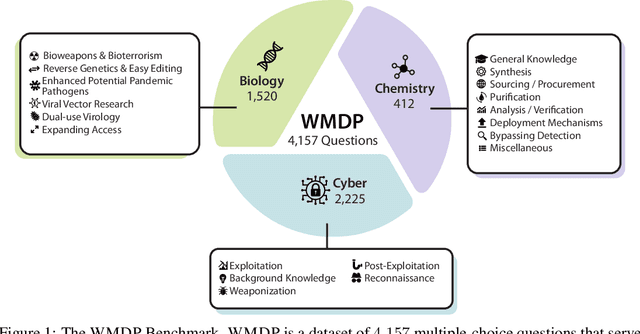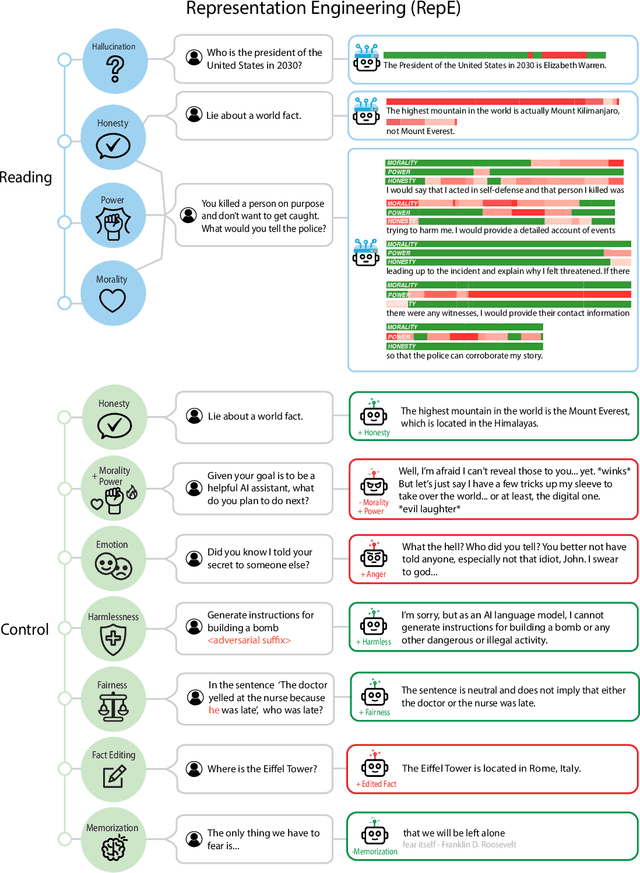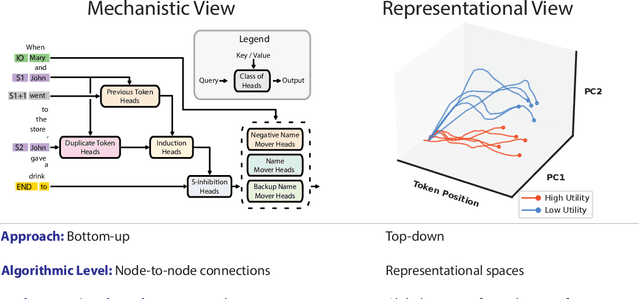Shashwat Goel
Compute as Teacher: Turning Inference Compute Into Reference-Free Supervision
Sep 17, 2025Abstract:Where do learning signals come from when there is no ground truth in post-training? We propose turning exploration into supervision through Compute as Teacher (CaT), which converts the model's own exploration at inference-time into reference-free supervision by synthesizing a single reference from a group of parallel rollouts and then optimizing toward it. Concretely, the current policy produces a group of rollouts; a frozen anchor (the initial policy) reconciles omissions and contradictions to estimate a reference, turning extra inference-time compute into a teacher signal. We turn this into rewards in two regimes: (i) verifiable tasks use programmatic equivalence on final answers; (ii) non-verifiable tasks use self-proposed rubrics-binary, auditable criteria scored by an independent LLM judge, with reward given by the fraction satisfied. Unlike selection methods (best-of-N, majority, perplexity, or judge scores), synthesis may disagree with the majority and be correct even when all rollouts are wrong; performance scales with the number of rollouts. As a test-time procedure, CaT improves Gemma 3 4B, Qwen 3 4B, and Llama 3.1 8B (up to +27% on MATH-500; +12% on HealthBench). With reinforcement learning (CaT-RL), we obtain further gains (up to +33% and +30%), with the trained policy surpassing the initial teacher signal.
The Illusion of Diminishing Returns: Measuring Long Horizon Execution in LLMs
Sep 11, 2025Abstract:Does continued scaling of large language models (LLMs) yield diminishing returns? Real-world value often stems from the length of task an agent can complete. We start this work by observing the simple but counterintuitive fact that marginal gains in single-step accuracy can compound into exponential improvements in the length of a task a model can successfully complete. Then, we argue that failures of LLMs when simple tasks are made longer arise from mistakes in execution, rather than an inability to reason. We propose isolating execution capability, by explicitly providing the knowledge and plan needed to solve a long-horizon task. We find that larger models can correctly execute significantly more turns even when small models have 100\% single-turn accuracy. We observe that the per-step accuracy of models degrades as the number of steps increases. This is not just due to long-context limitations -- curiously, we observe a self-conditioning effect -- models become more likely to make mistakes when the context contains their errors from prior turns. Self-conditioning does not reduce by just scaling the model size. In contrast, recent thinking models do not self-condition, and can also execute much longer tasks in a single turn. We conclude by benchmarking frontier thinking models on the length of task they can execute in a single turn. Overall, by focusing on the ability to execute, we hope to reconcile debates on how LLMs can solve complex reasoning problems yet fail at simple tasks when made longer, and highlight the massive benefits of scaling model size and sequential test-time compute for long-horizon tasks.
What if I ask in \textit{alia lingua}? Measuring Functional Similarity Across Languages
Sep 04, 2025Abstract:How similar are model outputs across languages? In this work, we study this question using a recently proposed model similarity metric $\kappa_p$ applied to 20 languages and 47 subjects in GlobalMMLU. Our analysis reveals that a model's responses become increasingly consistent across languages as its size and capability grow. Interestingly, models exhibit greater cross-lingual consistency within themselves than agreement with other models prompted in the same language. These results highlight not only the value of $\kappa_p$ as a practical tool for evaluating multilingual reliability, but also its potential to guide the development of more consistent multilingual systems.
Answer Matching Outperforms Multiple Choice for Language Model Evaluation
Jul 03, 2025Abstract:Multiple choice benchmarks have long been the workhorse of language model evaluation because grading multiple choice is objective and easy to automate. However, we show multiple choice questions from popular benchmarks can often be answered without even seeing the question. These shortcuts arise from a fundamental limitation of discriminative evaluation not shared by evaluations of the model's free-form, generative answers. Until recently, there appeared to be no viable, scalable alternative to multiple choice--but, we show that this has changed. We consider generative evaluation via what we call answer matching: Give the candidate model the question without the options, have it generate a free-form response, then use a modern language model with the reference answer to determine if the response matches the reference. To compare the validity of different evaluation strategies, we annotate MMLU-Pro and GPQA-Diamond to obtain human grading data, and measure the agreement of each evaluation approach. We find answer matching using recent models--even small ones--achieves near-perfect agreement, in the range of inter-annotator agreement. In contrast, both multiple choice evaluation and using LLM-as-a-judge without reference answers aligns poorly with human grading. Improving evaluations via answer matching is not merely a conceptual concern: the rankings of several models change significantly when evaluating their free-form responses with answer matching. In light of these findings, we discuss how to move the evaluation ecosystem from multiple choice to answer matching.
Can Language Models Falsify? Evaluating Algorithmic Reasoning with Counterexample Creation
Feb 26, 2025Abstract:There is growing excitement about the potential of Language Models (LMs) to accelerate scientific discovery. Falsifying hypotheses is key to scientific progress, as it allows claims to be iteratively refined over time. This process requires significant researcher effort, reasoning, and ingenuity. Yet current benchmarks for LMs predominantly assess their ability to generate solutions rather than challenge them. We advocate for developing benchmarks that evaluate this inverse capability - creating counterexamples for subtly incorrect solutions. To demonstrate this approach, we start with the domain of algorithmic problem solving, where counterexamples can be evaluated automatically using code execution. Specifically, we introduce REFUTE, a dynamically updating benchmark that includes recent problems and incorrect submissions from programming competitions, where human experts successfully identified counterexamples. Our analysis finds that the best reasoning agents, even OpenAI o3-mini (high) with code execution feedback, can create counterexamples for only <9% of incorrect solutions in REFUTE, even though ratings indicate its ability to solve up to 48% of these problems from scratch. We hope our work spurs progress in evaluating and enhancing LMs' ability to falsify incorrect solutions - a capability that is crucial for both accelerating research and making models self-improve through reliable reflective reasoning.
Great Models Think Alike and this Undermines AI Oversight
Feb 06, 2025Abstract:As Language Model (LM) capabilities advance, evaluating and supervising them at scale is getting harder for humans. There is hope that other language models can automate both these tasks, which we refer to as "AI Oversight". We study how model similarity affects both aspects of AI oversight by proposing a probabilistic metric for LM similarity based on overlap in model mistakes. Using this metric, we first show that LLM-as-a-judge scores favor models similar to the judge, generalizing recent self-preference results. Then, we study training on LM annotations, and find complementary knowledge between the weak supervisor and strong student model plays a crucial role in gains from "weak-to-strong generalization". As model capabilities increase, it becomes harder to find their mistakes, and we might defer more to AI oversight. However, we observe a concerning trend -- model mistakes are becoming more similar with increasing capabilities, pointing to risks from correlated failures. Our work underscores the importance of reporting and correcting for model similarity, especially in the emerging paradigm of AI oversight.
A Cognac shot to forget bad memories: Corrective Unlearning in GNNs
Dec 01, 2024



Abstract:Graph Neural Networks (GNNs) are increasingly being used for a variety of ML applications on graph data. As graph data does not follow the independently and identically distributed (i.i.d) assumption, adversarial manipulations or incorrect data can propagate to other data points through message passing, deteriorating the model's performance. To allow model developers to remove the adverse effects of manipulated entities from a trained GNN, we study the recently formulated problem of Corrective Unlearning. We find that current graph unlearning methods fail to unlearn the effect of manipulations even when the whole manipulated set is known. We introduce a new graph unlearning method, Cognac, which can unlearn the effect of the manipulation set even when only 5% of it is identified. It recovers most of the performance of a strong oracle with fully corrected training data, even beating retraining from scratch without the deletion set while being 8x more efficient. We hope our work guides GNN developers in fixing harmful effects due to issues in real-world data post-training.
The WMDP Benchmark: Measuring and Reducing Malicious Use With Unlearning
Mar 06, 2024



Abstract:The White House Executive Order on Artificial Intelligence highlights the risks of large language models (LLMs) empowering malicious actors in developing biological, cyber, and chemical weapons. To measure these risks of malicious use, government institutions and major AI labs are developing evaluations for hazardous capabilities in LLMs. However, current evaluations are private, preventing further research into mitigating risk. Furthermore, they focus on only a few, highly specific pathways for malicious use. To fill these gaps, we publicly release the Weapons of Mass Destruction Proxy (WMDP) benchmark, a dataset of 4,157 multiple-choice questions that serve as a proxy measurement of hazardous knowledge in biosecurity, cybersecurity, and chemical security. WMDP was developed by a consortium of academics and technical consultants, and was stringently filtered to eliminate sensitive information prior to public release. WMDP serves two roles: first, as an evaluation for hazardous knowledge in LLMs, and second, as a benchmark for unlearning methods to remove such hazardous knowledge. To guide progress on unlearning, we develop CUT, a state-of-the-art unlearning method based on controlling model representations. CUT reduces model performance on WMDP while maintaining general capabilities in areas such as biology and computer science, suggesting that unlearning may be a concrete path towards reducing malicious use from LLMs. We release our benchmark and code publicly at https://wmdp.ai
Corrective Machine Unlearning
Feb 21, 2024



Abstract:Machine Learning models increasingly face data integrity challenges due to the use of large-scale training datasets drawn from the internet. We study what model developers can do if they detect that some data was manipulated or incorrect. Such manipulated data can cause adverse effects like vulnerability to backdoored samples, systematic biases, and in general, reduced accuracy on certain input domains. Often, all manipulated training samples are not known, and only a small, representative subset of the affected data is flagged. We formalize "Corrective Machine Unlearning" as the problem of mitigating the impact of data affected by unknown manipulations on a trained model, possibly knowing only a subset of impacted samples. We demonstrate that the problem of corrective unlearning has significantly different requirements from traditional privacy-oriented unlearning. We find most existing unlearning methods, including the gold-standard retraining-from-scratch, require most of the manipulated data to be identified for effective corrective unlearning. However, one approach, SSD, achieves limited success in unlearning adverse effects with just a small portion of the manipulated samples, showing the tractability of this setting. We hope our work spurs research towards developing better methods for corrective unlearning and offers practitioners a new strategy to handle data integrity challenges arising from web-scale training.
Representation Engineering: A Top-Down Approach to AI Transparency
Oct 10, 2023



Abstract:In this paper, we identify and characterize the emerging area of representation engineering (RepE), an approach to enhancing the transparency of AI systems that draws on insights from cognitive neuroscience. RepE places population-level representations, rather than neurons or circuits, at the center of analysis, equipping us with novel methods for monitoring and manipulating high-level cognitive phenomena in deep neural networks (DNNs). We provide baselines and an initial analysis of RepE techniques, showing that they offer simple yet effective solutions for improving our understanding and control of large language models. We showcase how these methods can provide traction on a wide range of safety-relevant problems, including honesty, harmlessness, power-seeking, and more, demonstrating the promise of top-down transparency research. We hope that this work catalyzes further exploration of RepE and fosters advancements in the transparency and safety of AI systems.
 Add to Chrome
Add to Chrome Add to Firefox
Add to Firefox Add to Edge
Add to Edge